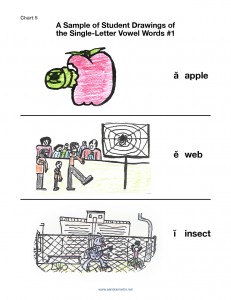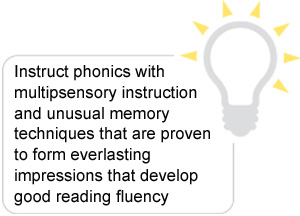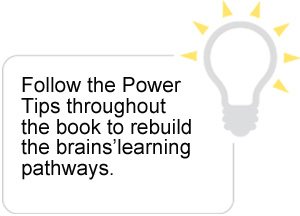*NOTATION: The sample reflects content found in the BASIC, FULL, STUDENT, and PRINT/eBook VERSIONS. Each version mirrors this sample with these basic differences:
- The BASIC VERSION and has no videos. However, there are 11 free videos of the 57 videos for you to sample. These videos are also free on our YouTube Channel: SpecialtyEDU
- The FULL version mirrors the BASIC VERSION but includes over 57 videos which are described below. The videos make the text come to life.
- The STUDENT VERSION includes 38 student videos and all 30 charts (no text) for individual student instruction. Teacher direction is needed for these videos. Phonics is an important subject that must be led and monitored. Although students work on their own at times with BSB1B, direction must be given. Instruction is found in the Teacher’s Editions of the BASIC, FULL, or PRINT VERSIONS. Teachers can purchase a STUDENT VERSION for everyone in class to allow for individualized paces. Another option is to purchase STUDENT VERSIONS for absent students that missed instruction or for those behind or ahead of the classroom instruction.
- THE PRINT VERSION mirrors the FULL VERSION in a hard copy-DVD format. Teachers receive a spiral-bound book and a DVD with all 57 videos.
Excerpt from Chapter 1
One of the most important jobs of an educator is teaching students to read. Reading is necessary in order to understand content areas of all other subject material. In addition, the ability to read well plays a critical role in students’ success in our society. Success in reading is the underlying building block that enables our students to achieve their highest potentials… …Some students learn to read well with any traditional educational technique. They have a natural inkling for left-brained activities and reading is one of them. Students with learning disabilities, autism, mental deficiencies, developmental delays, emotional-support needs, environmental disadvantages, English as a second language, and other learning differences often are not successful with traditional techniques and continue to challenge teachers in the instructional area of reading…
Excerpt from Chapter 2
The Value of Multisensory and Universal Instruction
Reading programs for all students should use many learning modalities, especially visual modalities, to enable students to learn and retain all the sounds necessary for initial reading and spelling. Visual modalities are those that incorporate pictures and image associations to enhance students’ abilities to remember information. My teaching experience shows that most students prefer to use visual or kinesthetic cues along with the auditory or kinesthetic cues to retain data. If the student is visually strong, it is essential to use strong, multisensory, visual reminders. These visual prompts serve to enhance the students’ weaker auditory areas where the phonics are based……..
Excerpt from Chapter 4
“Many students have difficulty remembering the sounds that match the alphabet letters because the alphabet letters by themselves have no meaning, just like our example with remembering the grocery store list. Remembering items that are not meaningful is hard for some people just like the unrelated items in the grocery store. However, since many people are good at creating pictures in their minds, we will draw similar pictures to make our phonic letters more meaningful. By providing meaning for our letters, you can match every letter with its proper sound. When you use the visualization techniques, you never forget the sounds. Your brain makes meaningful associations to help you remember them. You are training your brain with your preferred style of learning ~ with pictures. Therefore, your strengths create new pathways for the phonic sounds to enter your brain and you easily remember them. This makes reading and spelling words much easier….
Second Excerpt from Chapter 4
“I am choosing the word apple to go with the short “a”. I want you to visualize and then draw a picture that is about a colorful apple. This is not going to be an ordinary apple. In earlier grades, you paired the word “apple” with the short “a” letter. An ordinary apple is very boring. So, we are going to remember a more unusual apple. “You leave home for a big football game. The school’s team is playing their biggest rival for the state championship. Your best friends are with you. Before the game, everyone gets together, brings food, and talks. As you gather with your friends, you notice a big, shiny, red apple among the other food and you take it. The apple looks so crisp and sweet. You throw the apple back-and-forth to your friends like a football. You bite into it and the juice squirts out everywhere. Imagine that you feel and taste the juice! “As you take that bite, you notice a big green worm poking its head out of the apple. You realize that you bit down into and through the worm. You feel a piece of the slimy worm in your mouth. It wiggles. You choke and spit it out. The aftertaste and disgusting feeling are still present…
Excerpt from Chapter 9
The lesson in this chapter is the most important part of the program. This is where the students ultimately learn to transfer their knowledge of the phonic words from the index cards into sounds. After this lesson, students look at the letters that represent all of the vowel combinations they learned, recall their phonic words, and say the phonic vowel sounds associated with that word. The transfer from word to sound starts off slowly, but becomes very automatic after practice. Students pronounce all 28 most commonly used phonic vowel-sound combinations with 100% accuracy and without hesitation. Most importantly, the phonic sounds stay in their memories, enabling long-term retention….
Excerpt from Chapter 10
Now that students committed the phonic sounds to their memory banks through visual pictures, the teacher’s next focus is spelling the sounds that each letter represents. It is important that students only spell words and sounds that they can read and pronounce correctly. In this chapter, you learn to teach students a method of choosing from an organized set of phonic letters to make spelling decisions. Spelling becomes easier and the students learn to minimize spelling errors….
Videos
The following is a sample of BSB1B’s videos. Adolescents identify with the compelling sports-themed approach in BSB1B as they become the main character in over 50 teaching videos. Different video backdrops place students in the heart of a very unusual school football game. Videos add a multi sensory component to the teaching process that ensures better retention of the phonic sounds. View all 11 free videos (found in the BASIC VERSION) on our YouTube Channels: Building POWer Readers and Sandra Martin.
Teacher/Parent VIDEOS in the left margins of the ebooks are colored GREEN. GREEN videos explain theory and methods. Student VIDEOS in the left margins are colored BLUE. The BLUE color indicates actual instruction directed toward the student(s). Instructors can use the BLUE instructional videos in several ways:
- View and replicate the instruction.
- Project the instruction for the entire class.
- Have individual students view the instruction on tablets, phones, or computers.
Charts
Over 30 charts are included in all the versions and can accompany instruction in two ways:
- Click on the charts in the left margin to preview.
- Visit the charts section at the back of the book for the higher resolution document.








 Sandra Martin earned a Bachelor of Science in Education degree from Bloomsburg University, in Bloomsburg, PA, and a Master of Education degree in learning disabilities from Shippensburg University, in Shippensburg, PA. Sandra served as an adjunct professor at Dickinson College, in Carlisle, PA, where she taught student teachers to use multisensory and universal teaching techniques to meet the needs of all learners.
Sandra Martin earned a Bachelor of Science in Education degree from Bloomsburg University, in Bloomsburg, PA, and a Master of Education degree in learning disabilities from Shippensburg University, in Shippensburg, PA. Sandra served as an adjunct professor at Dickinson College, in Carlisle, PA, where she taught student teachers to use multisensory and universal teaching techniques to meet the needs of all learners.